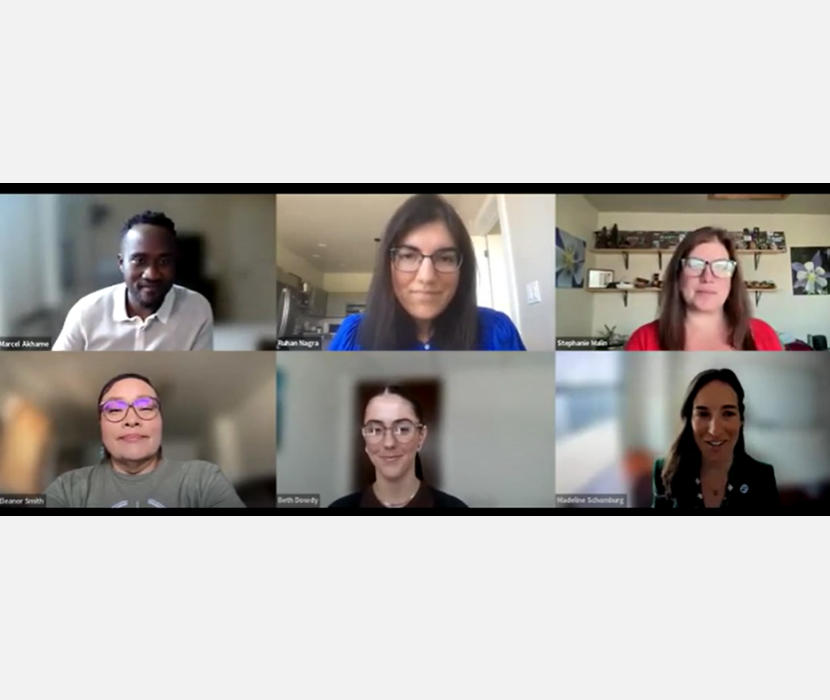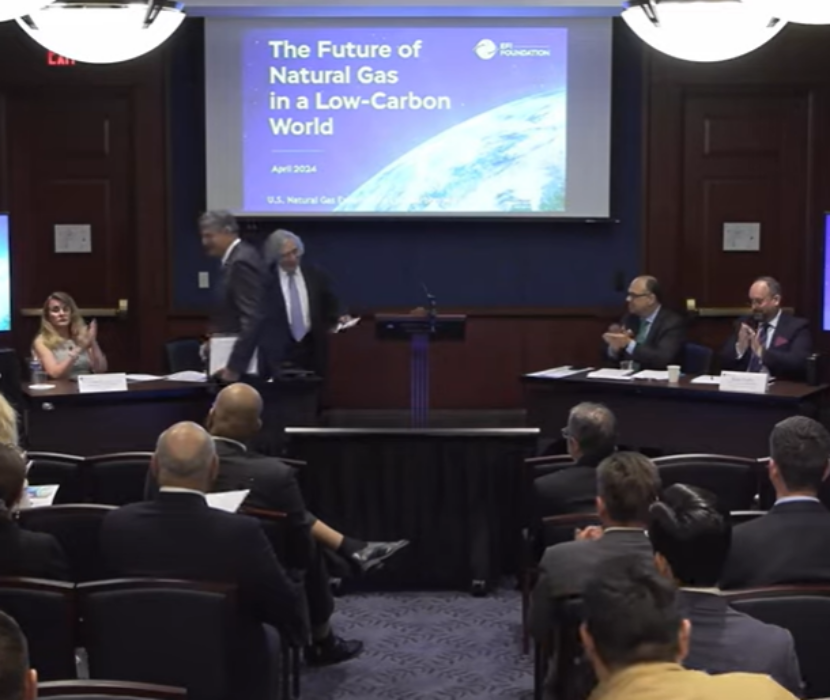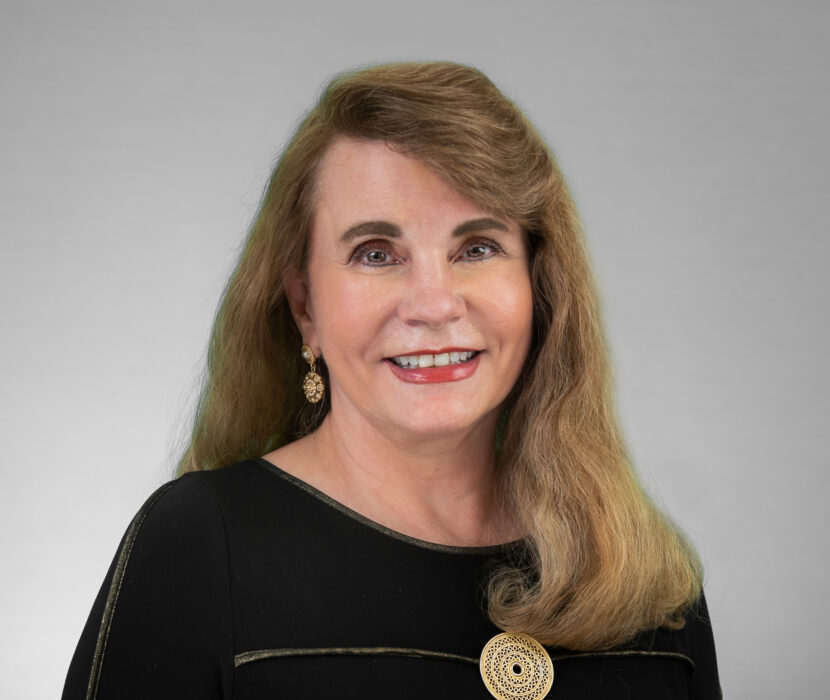
Speakers/panelists (top left to bottom right): Suzanne Baker (U.S. Department of Energy), Ani Kame’enui (Breakthrough Energy), Rudra V. Kapila (Third Way), Jeanette Pablo (Clean Air Task Force), Madeline Schomburg (EFI Foundation), Ernest J. Moniz (EFI Foundation)
On February 13, 2024, the EFI Foundation released a new factbook on building stronger community engagement in the development of hydrogen hubs. The release event featured remarks from EFI Foundation CEO Ernest Moniz and Research Director Madeline Schomburg, followed by a discussion of several experts working on community engagement, including from the U.S. Department of Energy (DOE).
The EFI Foundation’s new factbook reports the findings of an online survey of nearly 5,000 respondents across the United States on their perspectives of hydrogen and community engagement. To qualify, respondents self-identified as being part of one of four different groups: (1) disadvantaged communities, according to the Climate and Economic Justice Screening Tool; (2) recognized Native American tribes; (3) labor unions, worker organizations, or workforce development organizations; and (4) environmental justice or similar organizations that advocate for disadvantaged communities.
“We love this report because we love new data,” said Suzanne Baker, Stakeholder Engagement Specialist at the DOE Office of Clean Energy Demonstrations. “This is the very first survey of its kind that actually has used the same sort of categories that we are currently using in the federal government to define different [community] groups and to track what their needs are. … Now we have a baseline.”
The survey found high levels of support from all these groups for hydrogen’s potential to create new jobs and solve climate change. The survey also gives insight into how these groups prefer to engage with hydrogen hubs: citizen panels and public hearings were the methods that members of all groups considered most important.
Madeline Schomburg, who is the EFI Foundation’s Director of Research, summarized and gave comments on the research findings.
“Even though communities are unique and should be treated as such, what we found in our data again and again was a relatively high degree of consistency in how communities want to be approached and how they want to be brought into these processes,” Schomburg said. “There is an opportunity here to create a set of best practices and recommendations that can be utilized to give us all a common starting point. …”
Ernest Moniz—who is EFI Foundation CEO and former energy secretary—called the factbook “a resource to support ongoing efforts to align stakeholders in hydrogen hub development.” Of the EFI Foundation’s large body of hydrogen work, this study is the first focused on communities and culminates a year of work.
“We’re very excited about this new research direction,” Moniz said. “Together, we can leverage this moment for an equitable transition that tackles climate change while supporting the priorities of disadvantaged, tribal, labor, and [environmental justice] communities.”
The Need for Community Engagement
Last October (2023), the U.S. Department of Energy (DOE) selected seven clean hydrogen hubs across the country to receive funding from the Bipartisan Infrastructure Law. These hubs are set to establish regional networks of clean hydrogen producers, consumers, and connecting infrastructure that can accelerate producing, storing, delivering, and using clean hydrogen energy. (Read more from our piece, “What’s with all the hydrogen hubbub?”)
Communities have sometimes opposed the building of new energy infrastructure because of past harms from fossil fuels, which have included air pollution, water pollution, and health impacts.
“It’s really fair to say that there is an understanding and trust gap between climate and community stakeholders,” said Jeanette Pablo, then Director of Climate Equity at the Clean Air Task Force, at the release event. “They’re very different cultures. … So I was particularly impressed that the survey was so positive about hydrogen and its opportunities.”
Rudra Kapila is the Deputy Director of Carbon Management and Hydrogen at non-profit Third Way, and she and her team have begun doing fieldwork with hub communities. In the panel discussion, she said hydrogen developers must acknowledge the experiences of people living in underserved communities.
“There is this level of mistrust that you have to overcome,” Kapila said. “You are entering areas that are currently still dealing with legacy issues. …. [And] community engagement—that term itself has become a buzzword. But naturally, as the fact book has demonstrated, … when you are showing that you are genuinely engaged, that is when these communities are going to be more amenable to such projects.”
Putting Survey Results to Action
Suzanne Baker, Stakeholder Engagement Specialist at DOE’s Office of Clean Energy Demonstrations—which manages DOE’s hydrogen hubs program—said in the panel discussion that she was excited to learn how positive the views are toward hydrogen and found the survey to be encouraging.
“It’s really amazing not to be starting from a deficit,” Baker said. “We really need to get this [community engagement] right and to continue to foster that trust.”
Baker highlighted citizen panels—which the survey found to be a preferred engagement method across groups but which have not been in DOE’s Community Benefits Plan guidebook. A citizen panel is a group of people who represent all kinds of people in a community and who are chosen to discuss an issue and make recommendations on how to proceed.
Baker said now that she knows that citizen panels are a preferred engagement method, she and her team are very open to adding them.
“We absolutely are looking at opportunities for community voices to be heard throughout the life of the project through things like advisory boards and engagement councils. This recommendation [of citizen panels] is really consistent with a lot of the conversations that we are having with the hubs in negotiation right now,” Baker said. “Often you get overrepresentation of interested stakeholders and less representation from folks who aren’t as involved, and so I feel like they’re [citizen panels are] a really nice tool for addressing that disparity.”
Baker said that it will be probably 3 years before there is any “steel in the ground” on hydrogen hub projects, but that this period before construction is the time for active community engagement to begin. She said DOE is currently in active negotiations with the selected projects, and once those are complete, developers will have the next 12-18 months to first firm up and then start to execute on the community engagement plans that were part of their hydrogen hub applications.
“We [DOE] are going to be on the ground engaging with folks through listening sessions and public meetings and other types of engagements. I’m super open to the idea of adding additional modes of engagement over time,” she said. “I wouldn’t be surprised if many of the hubs pick up these recommendations even without it being mandated.”
She added that DOE is currently working on a partnering approach to allow the EFI Foundation and other organizations doing research to bring their findings directly to hubs so that the hubs can incorporate those recommendations into their approach in real time.
“We want local communities to be empowered to reach out both to [DOE] and to the hubs teams,” Baker said. “We’re going to be available to you and we want your input.”
Schomburg similarly encouraged continuing input from stakeholders for the EFI Foundation’s work, noting that the hydrogen and community engagement space are both constantly evolving and have even changed since she and her team began work on this study.
“Please reach out to us with comments, thoughts, and conversations, so we can continue to learn and grow with you in this process,” Schomburg said. “We believe strongly that the success of the [DOE hydrogen hubs] program depends on coalition building with communities.”
Baker said she is feeling optimistic about seizing on the moment for hydrogen.
“We have a real strategic advantage here,” she said. “People want this technology. They really like it. So of all the tricky climate tech, this one really has a chance to flourish.”
–Alicia Moulton (Deputy Director of Communications) and Dan Selby (Communications Intern)
(Share this post with others.)




